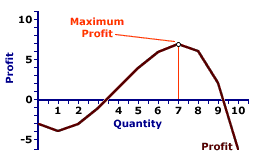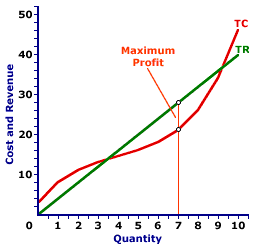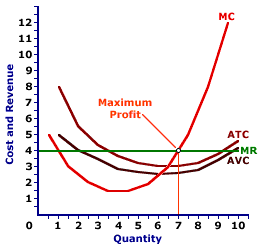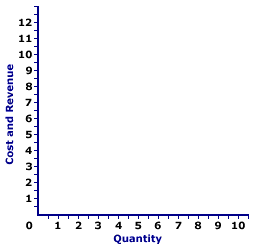Competing and winning in international markets
When the global recession hit, it walloped the aerospace industry. Tourist travel collapsed. Business flying was curtailed. Orders vanished.
But that wasn’t the story at Alta Precision Inc., a fast-growing, family-owned maker of landing gear parts in Montreal.
Sales barely dipped and have since recovered completely. At the height of the downturn, Alta was even able to secure a major new customer in Europe.
Alta has reaped the benefits of a strategy to become a global competitor in the aerospace industry. It refined its product line, invested to boost operational efficiency and aggressively tackled foreign markets.
It’s all added up to a more robust, innovative and productive business that’s a model for other Canadian entrepreneurs to follow as they confront intensifying global competition.
“If you have just two or three customers, you’re vulnerable,” says Guillermo Alonso, Jr., who took over from his father as Alta’s president in 2006. “For us, being international has meant security. Our backlog of orders is healthy.”
Alta’s current success stands in contrast to the company’s fortunes just a few years ago. At the beginning of the decade, Alta faced big troubles.
The 9/11 attacks had just taken place, and the airline business was on life support. The economy was being wrenched by the dot-com stock collapse, and customers were becoming increasingly demanding.
The company had done well supplying Montreal-based aerospace concerns like Bombardier, CAE and Pratt & Whitney since Alonso’s father, Guillermo, Sr., founded it in 1979. But the sudden cascade of new challenges made change a necessity.
Alta started knocking on doors in the U.S. and in 2003, won its first big deal, a military contract. The U.S. now accounts for 50% of sales. Just as important, the sales helped recession-proof the company because they diversified Alta’s sources of income.
Alta’s experience reflects that of many small and medium-sized Canadian companies. Going international is often not just about expanding; it’s about survival. But how do you compete internationally? Is it even the right step?
Those dilemmas are top of mind for many business executives who approach Carl Gravel for assistance. “Many entrepreneurs see immense risks, and it makes them hesitate,” Gravel says. “Our job is to show them that yes, there are risks, but you can manage them.”
Gravel is national director of global competitiveness at BDC. He heads a support team that helps Canadian companies seeking to build their businesses internationally.
Before heading into international markets, Gravel says, companies must ensure their fundamentals are in order, in areas such as sales and marketing, innovation strategy and operational efficiency.
The last one is the most important, he says. “If you’re not competitive locally, it’s going to be hard to work internationally.”
That means investing to boost productivity even when things are tough, Gravel says.
He also encourages companies to look at countries beyond the U.S., including emerging markets, which have shown high rates of growth in the economic recovery.
Another potential market: multinationals operating in Canada. Going global doesn’t necessarily require exporting directly to international markets, he says. It can also mean selling into global supply chains, much as Alta has done as a supplier to major Canadian aerospace concerns. This can eventually open doors to new markets where these multinationals operate.
Entrepreneurs need to proceed with care when expanding internationally, says Dominic Deneault, co-author of
Le Québec sur le podium (French only), a study of 25 successful large and small Quebec businesses operating abroad.
The biggest mistake he has seen is companies failing to adapt their business model or product and service portfolio to their targeted foreign market.
“You have to make sure you fit the needs of your client,” says Deneault, who is a corporate strategist at Deloitte Inc. in Montreal. “That means you have to redesign your product or service and adapt your marketing pitch, operational processes, strategy, branding—often your entire value chain.”
Apart from a solid global competitiveness strategy, business leaders also need internal fortitude, Deneault adds. That means ambition, tenacity and an appetite for risk.
Back at Alta, Alonso and his family (his father is still involved in the business as chairman, while sister Sonia is vice-president of administration) realized they had to retool their business as they went international.
“Customers are more demanding. It used to be that quality and on-time delivery were the most important things in our industry,” Alonso says. “Today, quality and delivery are givens. If you don’t have those, you aren’t even selected. Now, it’s price, price, price. And you can’t reduce your price without changing the way you do things.”
Alta responded by focusing on adding value in the area where the company excelled—making landing gear. It dropped aircraft engines and fuselages from the product line-up.
“We want to become the best in the world at supplying landing gear parts.”
Alta also hired
BDC Consulting to implement a lean manufacturing program, which aims to streamline production and improve international competitiveness with a just-in-time manufacturing process.
Since 2000, Alta has grown from 30 employees to 75, and plans to expand to 120 by 2012.
“If we didn’t have the international sales, we would have struggled a lot more than we did,” Alonso says. “Now we are ready for the upturn of the economy.”
Global Competitiveness Basics
Before you start eyeing a lucrative new international market for your business, you need a plan. Poor planning and execution are the culprits in nearly three-quarters of failed corporate expansions, says business strategist Dominic Deneault.
Here are some important elements of a globalization plan.
1) Fundamentals
You should be sure your fundamentals are in good shape and can be replicated from country to country before embarking on an international expansion. That means focusing on such things as your sales and marketing, supply chain, operational efficiency and innovation strategy. You also need to be sure you’ve got the financial capacity to stay the course until sales start rolling in.
2) Strategy
Are you expanding as part of a carefully thought-out growth strategy—or just for growth’s sake? Good reasons for going global can include diversification, pursuing market leadership, acquiring complementary assets, developing new competitive advantages and creating synergies with current operations.
3) Tenacity
Entrepreneurs who successfully navigate international waters often have a specific mix of personal qualities—tenacity, ambition and an appetite for risk.
“The first international venture often doesn’t work,” Deneault says. “That can lead entrepreneurs to question their international ambitions. If they don’t have the ambition, tenacity and a burning desire to learn from mistakes, they may have a problem.”
Enyinnaya Nnamdi
Sloane Business Management Consultants
CEO
info_sloanebizconsultants@yahoo.com
+23407-026341797










